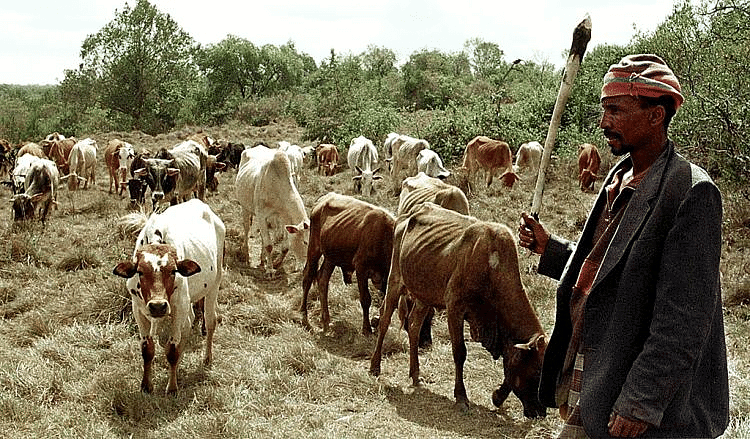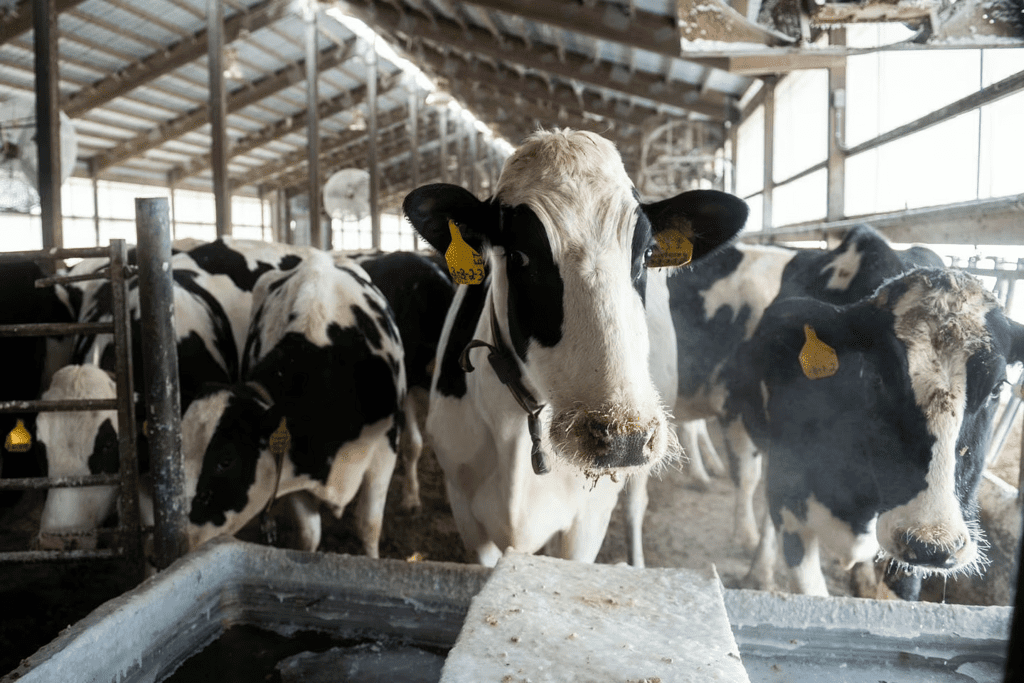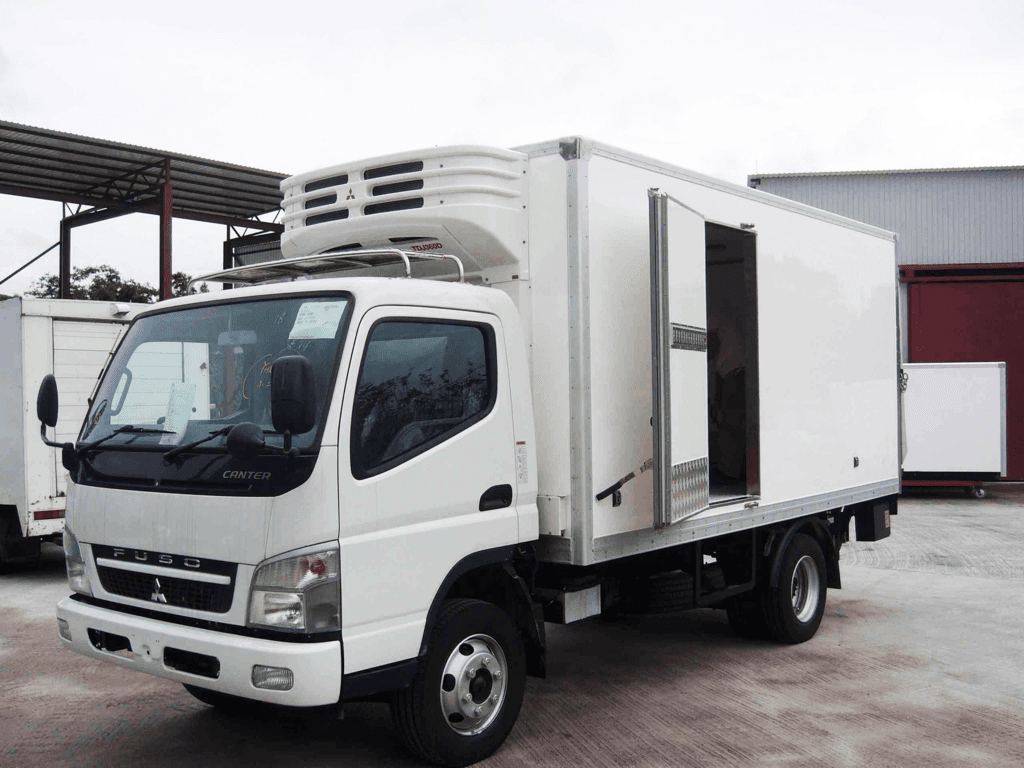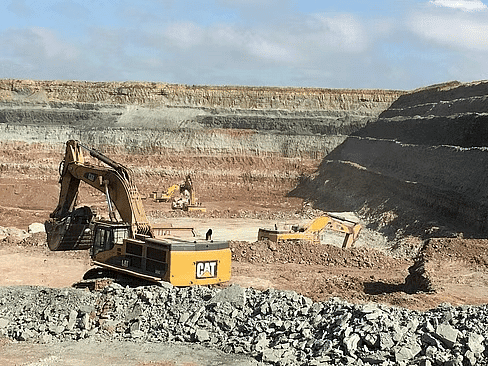Class 12 Geography Short Questions with Answers - Primary Activities
Q1: Explain ‘slash and burn agriculture’.
Ans: Slash and burn refers to the agricultural practice of clearing a forest by cutting down trees and burning them. The ash is mixed with the soil to make it fertile. The land is cultivated for a few years and is thereafter abandoned to allow the forest to regenerate and the land to recover its nutrients. It is also known as shifting cultivation.
Q2: What is nomadic herding?
Ans: Nomadic herding or pastoral nomadism is a primitive subsistence activity in which the herders rely on animals for food, clothing, shelter, tools and transport.
 Nomadic HerdingQ3: What do you mean by Transhumance?
Nomadic HerdingQ3: What do you mean by Transhumance?
Ans: The term transhumance refers to the seasonal migration of livestock between different elevations.
Key points include:
- During summer, herders move from plains to higher mountain pastures.
- In winter, they return to the plains from the mountains.
- This practice is common in regions like the Himalayas and tundra areas.
- It allows herders to utilise seasonal pastures effectively.
- However, the number of pastoral nomads is decreasing due to political boundaries and new settlement plans.
Q4: Name the areas where commercial livestock rearing is practised.
Ans: The areas are: New Zealand, Australia, Argentina, Uruguay and United States of America.
Q5: Why products of gathering cannot compete in the world market?
Ans: Products of gathering struggle to compete in the world market due to several factors:
- Synthetic products are often of higher quality.
- They are produced in larger quantities.
- Synthetic items are typically priced lower than gathered products.
As a result, the market for gathering products is limited.
Q6: Name the two activities on which the earliest human beings were dependent for their sustenance.
Ans: Gathering and hunting were the two main activities that early humans relied on for their sustenance.
- They gathered edible plants from their surroundings.
- They hunted animals for food.
Q7: Write any two primary activities.
Ans: A few of the primary activities: Hunting, agriculture, fishing and mining.
Q8: Describe the way of life of nomadic herders.
Ans: Way of life of nomadic herders :
- They depend on the primitive subsistence activity.
- Herders rely on animals for food, clothing, shelter, tools and transport.
- They move from one place to another with their livestock.
- They follow well-defined territory.
- A wide variety of animals is kept in different regions.
Q9: Define ‘dairy farming’.
Ans: Dairy farming is a highly advanced method of raising milch animals. It requires significant investment in both capital and labour.
- Involves specialized facilities such as animal sheds and storage for fodder.
- Utilizes feeding and milking machines to enhance efficiency.
- Focuses on cattle breeding, health care, and veterinary services.
- Requires continuous care, with no off-season like crop farming.
Dairy farming is often located near urban areas, providing easy access to markets for fresh milk and dairy products.
 Dairy FarmingQ10: Differentiate between Nomadic Herding and Commercial Livestock Rearing.
Dairy FarmingQ10: Differentiate between Nomadic Herding and Commercial Livestock Rearing.
Ans: Q11: Explain the term market gardening.
Q11: Explain the term market gardening.
Ans: Market gardening specializes in the cultivation of high value crops such as vegetables, fruits and flowers, solely for the urban markets. Farms are small and are located where there are good transportation links with the urban centre where high income group of consumers is located.
Q12: “Agri-business farm are mechanized and large in size”. Examine the statement.
Ans: Agri-business farms are large estates that operate commercially. They utilise mechanisation and scientific methods for cultivation.
- The size of these farms is significant, allowing for extensive operations.
- Large machines are employed for tasks such as ploughing and harvesting.
- Examples include tea estates and coffee estates.
Q13: Mention an area of extensive commercial grain farming in Africa.
Ans: The Velds of South Africa is where extensive commercial grain farming is done in Africa.
Q14: Future of shifting cultivation is bleak. Discuss.
Ans: The future of shifting cultivation appears bleak due to several challenges:
- These days the biggest problem being faced by the shifting cultivators is of shortening cycles of jhum, which makes the entire practice unsustainable.
- Also there are several restrictions imposed by governments through forest acts etc., which hinder the free movement of tribes and practice of shifting cultivation.
- Shifting cultivation is sustainable (only for self -consumption) in nature, hence it is unable to meet with the market demand and therefore there is no scope for it in the increasing globalized markets.
- With the infiltration of non tribals in the tribal areas, tribals are adopting to modem agricultural practices which are more productive and environmentally sustainable.
- To support a small population, a huge land resource base is required, ultimately it leads to soil erosion and land degradation.
Q15: Large scale dairy farming is the result of the development of transportation and refrigeration.
Ans:
- Dairy products are highly perishable in nature. They have a small shelf life. For their supply to distant markets and overseas, adequate storage facilities with temperature control and storage conditions is a must.
- Initially, supply of dairy products was limited to nearby markets but development of storage, transportation and preservation facilities have widened their coverage.
- Modern transportation such as refrigerated trucks, ships with special cargoes, and faster means of transportation like airways, provide adequate facilities which allow transportation of dairy products to far off markets without spoilage.
- Refrigeration prevents dairy products from getting spoiled. It increases their durability.
 Refrigerated Truck
Refrigerated Truck
Q16: What is truck farming? Mention any two features of truck farming.
Ans: Truck farming is a type of agriculture found near metropolitan areas. Farmers grow and transport fresh produce, such as vegetables and milk, to cities using trucks overnight.
Features:
- Farmers are engaged in growing of vegetables, fruits and flowers etc.
- They use HYV seeds, Chemicals and fertilizers.
- This farming requires a well-developed network of roads connected with fields.
Q17: Why Mediterranean agriculture is considered as one of the best and profitable type of agriculture?
Ans: Mediterranean agriculture is regarded as one of the most profitable types of agriculture due to several key factors:
- Highly specialised commercial practices enhance efficiency.
- Viticulture is a major focus, producing some of the world's finest wines.
- High-quality grapes yield distinctive wines, while inferior grapes are dried into raisins.
- The region is known for its production of olives and figs.
- During winter, valuable crops like fruits and vegetables are grown, meeting high demand in European and North American markets.
Q18: What is subsistence agriculture? Mention any four characteristic of primitive subsistence agriculture.
Ans: Subsistence agriculture is one in which the farming areas consume all , or nearly so, of the products locally grown.
Four Characteristics of Primitive Subsistence Agriculture are :
(i) The cultivated patches are very small and cultivation is done with very primitive tools, such as sticks.
(ii) After 3 to 5 years the soil looses its fertility and the farmer shifts to another part and cleans another patch of the forest for cultivation.
(iii) The farmer may return to the earlier patch after sometime.
(iv) One of the features of this cultivation is that the cycle of Jhum becomes less and less due to loss of fertility in different parts.
Q19: What is the meaning of ‘open-cast mining’?
Ans:
- It's for minerals discovered near the surface of the earth.
- This approach is utilized when commercially valuable minerals are found near the surface.
- It is easiest and cheapest.
 Open Cast MiningQ20: What are the two types of mining? Write two characteristics of each.
Open Cast MiningQ20: What are the two types of mining? Write two characteristics of each.
Ans: The two types of mining are : underground mining and surface mining.
Underground mining :
- They are more expensive.
- They are often used to reach deeper deposits.
Surface mining or open cast mining:
- They are typically used for more shallow and less valuable deposits.
- It is easier way of mining.
|
50 videos|353 docs|37 tests
|
FAQs on Class 12 Geography Short Questions with Answers - Primary Activities
| 1. What are primary activities in the context of education? |  |
| 2. How do primary activities impact student learning outcomes? |  |
| 3. What role do educators play in primary activities? |  |
| 4. Can technology enhance primary activities in education? |  |
| 5. How can parents support primary activities at home? |  |






















